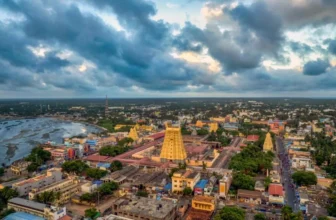🔍 Fireproof Wisdom: The Ancient Indian Technique of “Bhasma” and the Science of Ash-Based Healing
Introduction
Imagine turning metal into medicine. That’s exactly what ancient Indian alchemists and Ayurvedic practitioners achieved with Bhasma—an age-old practice of transforming purified metals and minerals into fine ash, believed to hold healing powers. Used for centuries in India and parts of Southeast Asia, Bhasma (literally meaning “that which has been burnt”) represents a sophisticated union of alchemy, herbal medicine, and elemental science.
Modern research now investigates these fine, calcined powders and finds surprising correlations with nanotechnology, bioavailability, and even immune modulation. Let’s explore how this ancient metallurgical practice reveals secrets that modern science is only beginning to decode.
🔥 What Is Bhasma?
Bhasma refers to ash prepared from metals like gold, silver, copper, iron, mercury, or minerals such as mica and pearl, through a meticulously layered process of detoxification, calcination, and incineration—often repeated 10 to 100 times.
Each Bhasma is typically:
- Tasteless or slightly astringent
- Free from toxicity
- Reduced to particles so fine they can be absorbed by the body
- Mixed with herbal juices or cow’s milk to enhance efficacy
Examples:
- Swarna Bhasma (Gold ash) – considered rejuvenating
- Lauha Bhasma (Iron ash) – used for anemia
- Tamra Bhasma (Copper ash) – used in liver disorders
- Abhraka Bhasma (Mica ash) – for respiratory and neurological conditions
🧪 Scientific Insight: Nanomedicine Before Nanotech?
Recent studies have examined Bhasma under electron microscopes and X-ray diffraction tools, finding that:
1. Nanoparticle Size
- Many Bhasmas are composed of particles less than 100 nanometers in size.
- This enhances bioavailability—meaning the body can absorb them more efficiently than bulk minerals.
2. Reduced Toxicity Through Purification
- Detoxification steps (called Shodhana) involve boiling metals with herbal decoctions.
- This removes impurities and binds the metal with organic compounds, reducing toxicity.
- For example, mercury when used in Rasa Shastra becomes inert and non-toxic in its final Bhasma form—though this still remains controversial and tightly regulated.
3. Enhanced Therapeutic Effect
- Bhasmas demonstrate immunomodulatory, anti-inflammatory, and adaptogenic effects in animal and in-vitro studies.
- Swarna Bhasma is being studied for its role in boosting immunity and acting as an adjuvant in certain therapies.
⚗️ The Making of Bhasma: Metallurgy Meets Medicine
The preparation of Bhasma requires:
- High-temperature furnaces made from cow dung cakes (up to 800°C–1000°C).
- Repeated incinerations (Marana) to break down the metal into ash.
- Herbal extracts to assist in transforming the metal into a safe and effective compound.
This process was manual, intuitive, and deeply knowledge-based, passed down in guru-shishya traditions for generations.
🧬 Modern Parallels
- Gold nanoparticles are now used in Western medicine for cancer treatment and diagnostics—ironically echoing what Swarna Bhasma has aimed at for centuries.
- Iron oxide nanoparticles in Lauha Bhasma resemble modern iron supplements, but with increased tolerance and better bio-distribution.
- Bhasma particles are often coated in carbon from herbs, making them more stable—similar to today’s drug delivery technologies.
⚖️ Controversies and Cautions
- Not all Bhasmas are created equal. Poorly made or unregulated versions can be toxic.
- Some contain trace amounts of heavy metals—standardization and quality control are essential.
- The Indian government has implemented Good Manufacturing Practices (GMP) for Ayurvedic products to ensure safety.
Still, interest is growing in how traditional metal-based medicines might hold clues for future biomedical breakthroughs.
🧭 Conclusion: Fire, Metal, and the Alchemy of Healing
Bhasma is more than just ancient ash—it’s a reflection of deep experimentation, systematic knowledge, and a belief in the healing power of transformation. From the furnace of tradition emerges a practice that aligns strikingly with modern science, reminding us that yesterday’s wisdom may well be tomorrow’s frontier.










